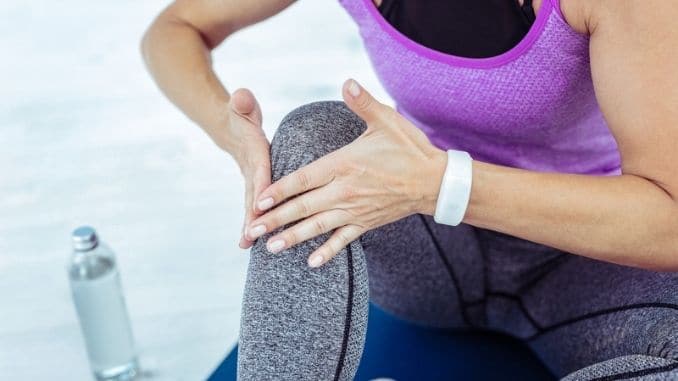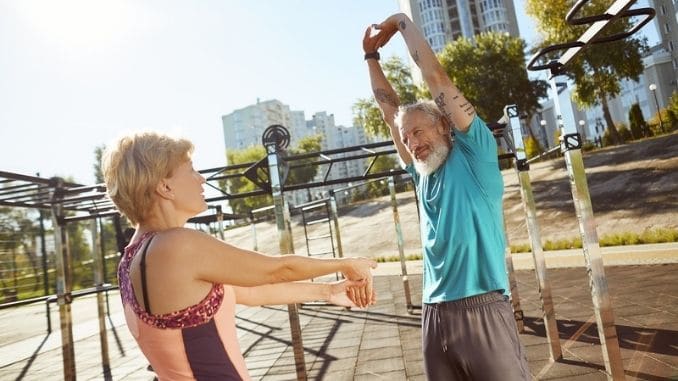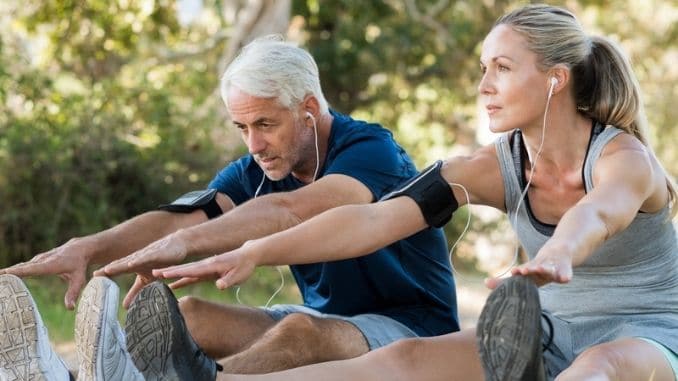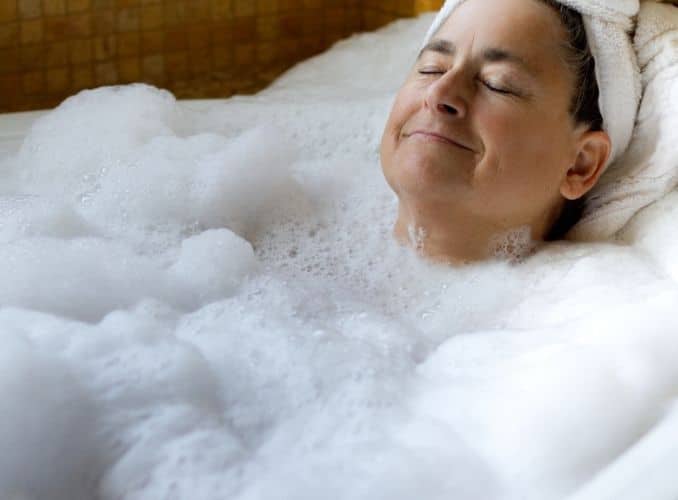
Post-workout muscle soreness, also known as Delayed Onset Muscle Soreness (DOMS), is a common side effect of the stress put on muscles when you exercise. DOMS usually begins within 6-8 hours after a new activity or a change in activity level and can last up to 24-48 hours after the exercise. If you haven’t exercised for a while or if you are starting a new physical activity, you are even more likely to experience sore muscles after your workout. Post-workout muscle soreness is simply your body’s way of telling you that your muscles need time to recover.
It’s important to note that there’s a very fine line between gaining results through building muscle and causing damage to your muscles. If your DOMS is a bit more painful or debilitating, it’s best to avoid strenuous exercise until you are no longer sore. The good news is that once your body gets accustomed to the new sport or exercise, you will experience little or no muscle soreness.
Helpful Hints for Decreasing Post-Workout Muscle Soreness.
1. Apply Ice or Heat
If you have an acute injury and you are experiencing swelling of the muscle and the area feels warm, wrap an ice pack in a thin towel and place it on the affected area for about 15 minutes. If there isn’t any swelling and the muscles are just sore from exercise, apply a heat pack for 15 minutes to boost blood circulation.
2. Go for a Massage
A trigger point or sports massage will help to relax very tight, sore muscles and soothe muscle aches.
3. Stretch, Stretch, Stretch!
Stretch your muscles for about 10 minutes after a rigorous workout to prevent soreness. Before exercising, remember to warm up your muscles with simple movements like arm swings, marching on the spot, or walking slowly and gradually picking up the pace.
4. Do Light Exercises
Do not stop exercising completely. Post-workout muscle soreness is often a sign that your muscles have been stretched and are slowly getting stronger. By continuing to use your muscles with some light exercise like walking or swimming, you can help speed up the elimination of lactic acid buildup.
5. Build up Eccentric Exercises Slowly
You are more likely to get muscle aches if your muscles are working eccentrically. Eccentric contractions occur when your muscles lengthen under tension, like the “down motion” of a bicep curl. Walking or running downhill are also examples of eccentric training. Increase your intensity level gradually.
6. Take a Warm Bath
A warm bath can loosen tight muscles and boost blood circulation, providing temporary relief. The cornerstone of treating muscle soreness is rest, but it’s also important to move and maintain your range of motion as much as possible.
Good Pain vs Bad Pain
Good pain, believe it or not, does exist. Mild soreness or achiness after exercise is usually the result of mild inflammation or micro-tears in your muscles or tendons. Extensive exercise can also cause a build-up of lactic acid in the muscles. These micro-tears are repaired when you rest, and this helps muscles grow in size and strength. This microtrauma may sound harmful, but it is your body’s natural response to a muscle workload. This kind of acceptable pain might occur when you start a new exercise when you go back to an exercise you haven’t done in a while, or if you push yourself a little harder than you are accustomed to. The good news is that this soreness typically goes away in a few days on its own. Whether or not you should work through this type of pain is a tricky answer. If you’re only experiencing low-level soreness, it’s probably okay to do a lighter workout. Some physical activity might even help to ease the achiness. There is, however, a fine line between gaining results through building muscle and causing damage. If your DOMS is a bit more painful, it’s best to avoid strenuous exercise until you are no longer sore.
Strong, sharp, or persistent pain that develops while you are exercising is a different matter. Pain represents injury. It occurs as a result of overuse or too much stress placed on a muscle or a tendon. It can be the result of repetitive use or a single episode of overloading a muscle or tendon, straining the muscle. Pain during physical activity is a signal that you are putting too much strain on a muscle or tendon and should stop what you are doing.
The cornerstone of treating muscle soreness is REST, but it’s also important to move and maintain your range of motion as much as possible. Applying ice and heat can often help, as can the occasional use of anti-inflammatory medicines. If soreness or pain is significantly affecting your daily activities, causing noticeable weakness, persists for several weeks to a month, or continues when you are resting or interrupts sleep, consult with your doctor. Stretching before and after exercise and staying well-hydrated can help you avoid muscle strain, but the absolute best way to avoid reaching the stage of unacceptable pain — as well as to prevent the onset of DOMS — is to start low and go slow.
Discover the best way to decrease muscle soreness and protect your body from future injuries. Click here for more info.





